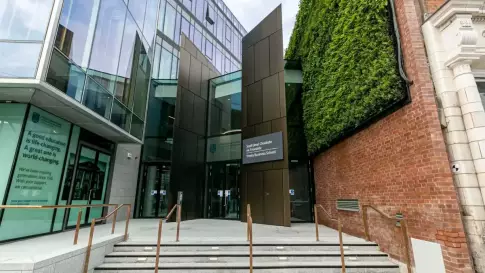Eduniversal Best Masters Ranking in Sustainable Development and Environmental Management TOP 10 in Latin America
Explore the evolving landscape of Master’s programs in Sustainable Development and Environmental Management in Latin America in 2025. This article delves into market size, curriculum innovations, employability, accessibility challenges, and regional outlook while highlighting the role of digital transformation and policy alignment.
Master’s in Sustainable Development and Environmental Management: Specialization, Application and Career Opportunities.
Overview: Growth of Sustainable Development and Environmental Education in Latin America
The Master’s in Sustainable Development and Environmental Management in Latin America is witnessing a surge in both interest and relevance. This growth is driven by evolving environmental policies, socio-economic pressures, and educational advancements tailored to regional needs. While precise enrollment numbers aren’tOverview: Growth of Sustainable Development and Environmental Education in Latin America
The Master’s in Sustainable Development and Environmental Management in Latin America is witnessing a surge in both interest and relevance. This growth is driven by evolving environmental policies, socio-economic pressures, and educational advancements tailored to regional needs.
While precise enrollment numbers aren’t aggregated, notable programs like Universidad de los Andes’ Environmental Management master’s reveal sustained demand. With curriculum structures that support professionals—flexible credits and formats—these programs mirror the broader educational expansion across sectors addressing sustainability.
Intra-regional student mobility is gradually increasing, facilitated by institutional partnerships and Latin American academic agreements. This development opens up pathways often hindered by visa restrictions and financial barriers.
As with other fields such as Energy and Natural Resources, growth is influenced by macroeconomic and policy drivers.
Market Drivers and Regional Pressures
Several regional and global forces shape the trajectory of these programs:
- Economic stress and inequality push for resilient, inclusive development models responsive to inequality and climate adversity.
- Environmental policy momentum rose rapidly until 2020, but slowed due to fiscal constraints, demanding a new wave of sustainability professionals.
- Digital technology convergence—particularly AI, GIS, and analytics—is increasing the need for graduates skilled in tech-enabled environmental decision-making.
- Geopolitical fragmentation and trust gaps create urgency for ethical leadership in managing change and equity in development.
This shift, akin to developments in Corporate Social Responsibility, emphasizes a growing need for multidisciplinary talent.
Curriculum Trends and Areas of Specialization (2025)
The curriculum has become increasingly tailored to evolving sustainability needs by integrating:
- Climate change strategies: mitigation, adaptation, and resilience planning.
- Sustainable urbanization: resilient cities and infrastructure.
- Circular economy and effective resource management.
- Environmental justice and biodiversity conservation.
- Energy-water-food nexus management.
These content areas mirror industry’s evolving needs and mirror tech-infused fields like Data Analytics.
Programs largely follow an interdisciplinary approach, pulling from sciences, policy, management, ethics, and tech. Field-based learning, capstone projects, internships, and NGO partnerships are foundational, ensuring theory is translated into tangible, applied competencies.
Micro-credentialing and modular learning, along with hybrid and online formats, are playing an increasing role in upskilling professionals, similar to trends in Executive MBAs.
Skills Development and Career Outcomes
Graduates are expected to exhibit a hybrid of technical and transversal skills, including:
- Climate risk modeling
- Digital tools like GIS and remote sensing
- Policy advocacy and ethical leadership
- Stakeholder management and project agility
Job placements typically span ministries, intergovernmental organizations, environmental consultancies, NGOs, and corporate sustainability departments. Salaries are competitive across emerging economies, often increasing with advanced specialization and relevant work experience.
As in sectors such as Public Administration, practical experiences such as apprenticeships help bridge academic theory with public service challenges.
Program Quality, Accreditation, and Recognition
Quality assurance mechanisms are administered at the national level—such as Colombia’s SNIES system, accrediting graduate environmental programs for up to seven years. This ensures both academic rigor and industry alignment.
The regional landscape now sees efforts toward international recognition through transferability initiatives within the Latin American Higher Education Area (ENLACES). These frameworks also begin to mirror movement in more established educational markets such as Europe or North America.
Visa and employment barriers remain for international mobility, but recent regional agreements are beginning to simplify pathways for Latin American cross-border education.
Like recognized programs in Sustainable Development ranking lists, qualifications are gaining global appeal.
Access, Affordability, and Funding Mechanisms
Tuition in public universities may start around USD 3,000/year and reach up to USD 10,000/year in private institutions, varying substantially across Latin American countries.
Though less common, scholarships and sustainability-linked grants through governmental and international partnerships are expanding. Increasingly, employer-funded education programs support working professionals pursuing part-time or hybrid master's degrees.
Programs showing strong return on investment often feature tight industry integration and targeted career development—similar to courses in Retail Sales Management and Business Development where employment pathways are clearly defined.
Regional Competition and Digital Innovations
Domestic and regional competition among universities is intensifying with greater intra-Latin American student mobility. Institutions are forming cross-border partnerships supporting joint degrees, dual diplomas, or shared learning via EdTech platforms. These innovations are connecting remote and marginalized learners to sustainability education.
Online and blended delivery has helped address geographical and financial obstacles seen across countries. Growth in online accessibility mirrors that of fields like E-Business and Digital Marketing, making education more globally aligned.
Challenges and Strategic Risks
Despite advancements, key hurdles remain:
- Inequities in access and affordability restrict participation from underrepresented communities.
- Faculty shortages, especially in emerging digital disciplines, limit scale and reach.
- Curricular misalignment with labor trends can hamper employability unless addressed through adaptive updates and collaboration.
- Slow adoption of experiential digital platforms in some institutions hinders immersion in digital tools vital to environmental practice.
Many of these bottlenecks reflect analogous challenges seen in newer fields such as Big Data Management.
Future Outlook (2025–2028): Growth and Transformation
With the UN’s Sustainable Development Goals and regional adaptation strategies continuing to shape policy and funding, the long-term outlook for these master’s programs remains positive.
Scenarios project stable growth complemented by progressive digitization, innovative learning models like micro-degrees, and industry-academia links. Anticipated international agreements and sustainability investment frameworks are poised to accelerate development further.
Education models focusing on AI-supported environmental risk modeling, circular economy entrepreneurship, and inclusive online platforms are expected to scale, repositioning Latin America as a proactive region in climate leadership education.
The rise of industry-aligned themes, as also seen in Environmental Risk and Security, suggests that regional programming is pivoting toward global alignment and applied leadership transformation.
Conclusion
The Master’s in Sustainable Development and Environmental Management in Latin America is evolving into a cornerstone of regional progress. Balancing theoretical rigor with applied learning, digital fluency, and social equity, the specialization is critical in preparing leaders for the region’s green transition.
Strategic collaboration across governments, businesses, and academia—along with expanded access—will be pivotal in maximizing the potential of these programs. As institutions align toward inclusive, resilient futures, they are likely to play a decisive role in the global sustainability agenda.
Discover Eduniversal Best Masters Ranking in Sustainable Development and Environmental Management in Latin America
Peru
Peru
Colombia
Colombia
Argentina
Colombia
Nicaragua
Dominican Rep.
Panama
Latest news
Trinity Business School celebrates its 100th anniversary with a sustainable time capsule containing 155 messages from students and staff, designed to be opened in 2075 and connect future business leaders across generations.
London Business School's Corporate 100 Alliance unites global leaders to navigate AI disruption, sustainability, and economic change.
Explore how KEDGE Business School champions student-athletes through its innovative KEDGE Sport Community, blending academic success with athletic excellence.



